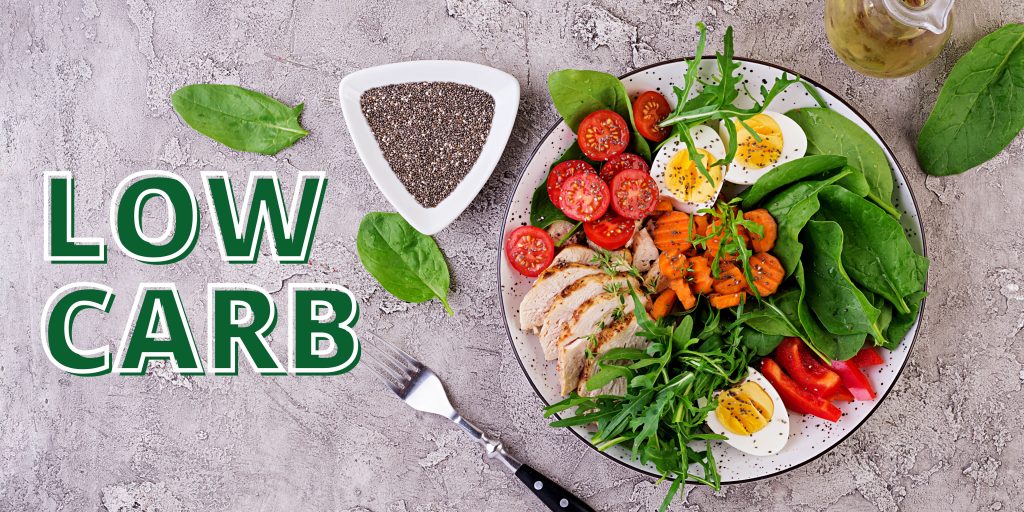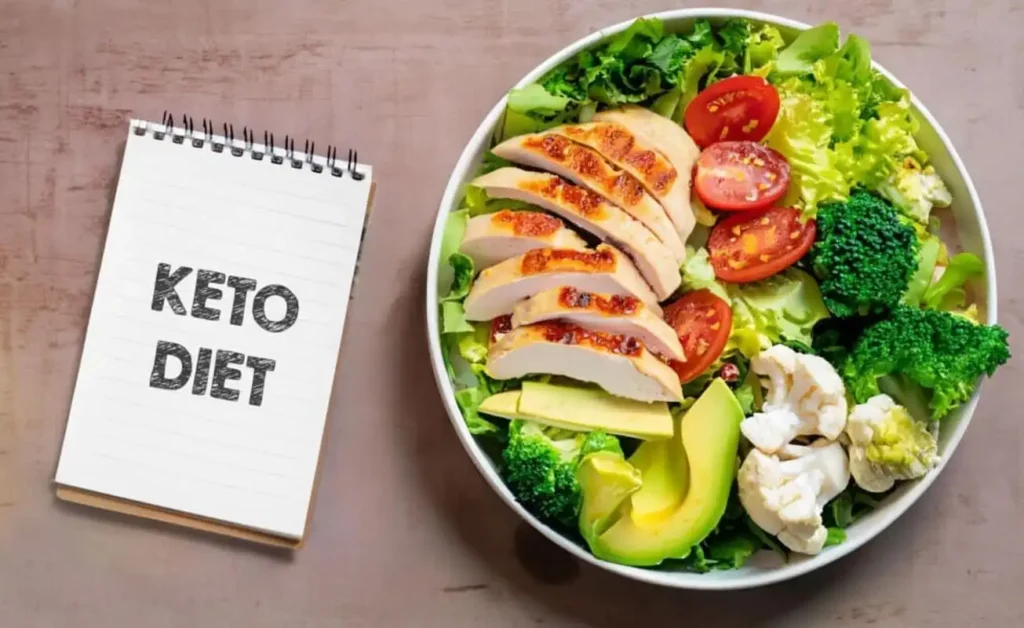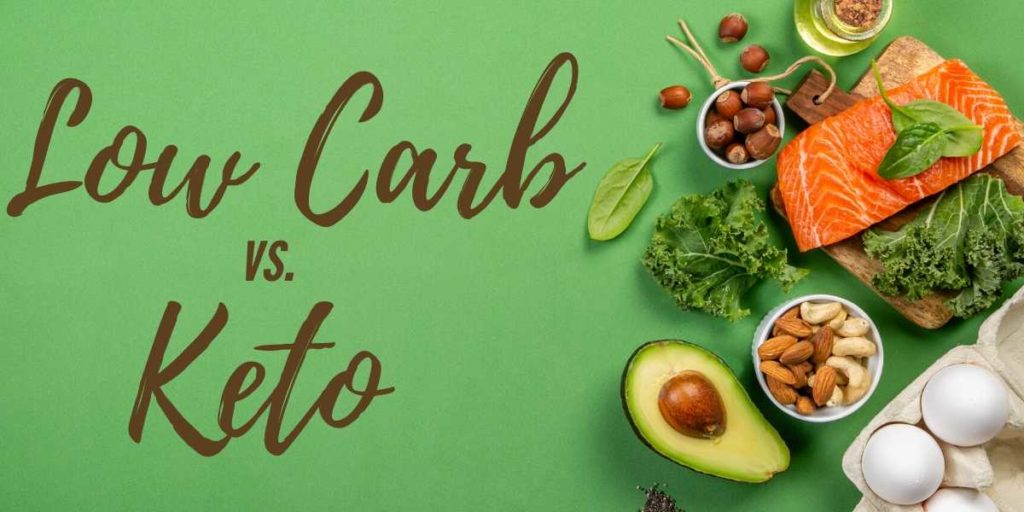Navigating the world of dietary choices can be overwhelming, with new trends and eating philosophies emerging constantly. Among the most popular and often misunderstood are low-carb and ketogenic (keto) diets. While both emphasize reducing carbohydrate intake, they are distinct in their approaches and the physiological changes they induce. Understanding these differences is crucial for anyone considering adopting either eating pattern, ensuring you make an informed decision that aligns with your health goals and lifestyle.
This comprehensive guide will delve deep into the nuances of low-carb and ketogenic diets, exploring their definitions, benefits, potential drawbacks, and practical considerations. We’ll equip you with the knowledge to distinguish between them and determine which might be the best fit for you, all while maintaining a professional, yet approachable, tone.
Understanding the Landscape: Carbohydrates and Their Role
Before we dive into the specifics of low-carb and keto, let’s briefly review the role of carbohydrates in our bodies. Carbohydrates are one of the three macronutrients, alongside proteins and fats, and serve as the body’s primary source of energy. When consumed, carbohydrates are broken down into glucose, which is then used by cells for fuel or stored as glycogen in the liver and muscles for later use.
Types of Carbohydrates:
- Simple Carbohydrates: Found in sugars (fructose, glucose, sucrose) and processed foods. They are quickly digested and can lead to rapid spikes in blood sugar.
- Complex Carbohydrates: Found in whole grains, vegetables, and legumes. They are digested more slowly, providing a sustained release of energy and often containing fiber, vitamins, and minerals.
While essential, excessive consumption of refined carbohydrates, often found in modern Western diets, has been linked to various health issues, including obesity, type 2 diabetes, and cardiovascular disease. This is precisely why low-carb and ketogenic approaches have gained traction – they aim to mitigate these risks by reducing carbohydrate intake.
What is a Low-Carb Diet?

A low-carb diet, as the name suggests, involves restricting the amount of carbohydrates consumed daily. However, “low-carb” is a broad term, and there isn’t a universally agreed-upon definition for the exact carbohydrate limit. Generally, it means consuming significantly fewer carbohydrates than the standard dietary recommendations, which typically suggest 45-65% of daily calories from carbohydrates.
Key Characteristics of a Low-Carb Diet:
- Carbohydrate Range: Typically, a low-carb diet limits carbohydrate intake to anywhere from 50 to 150 grams per day. This allows for more flexibility than a ketogenic diet.
- Focus on Whole Foods: Emphasizes non-starchy vegetables, lean proteins, healthy fats, and often includes some fruits, nuts, and seeds.
- Avoids Processed Carbs: Strongly discourages or eliminates sugary drinks, white bread, pasta, pastries, and other refined carbohydrate sources.
- Gradual Reduction: Often involves a more gradual reduction in carbohydrates compared to the strict initial phase of a ketogenic diet.
Examples of Foods in a Low-Carb Diet:
- Proteins: Chicken, beef, fish, eggs, tofu, tempeh.
- Non-starchy Vegetables: Broccoli, spinach, cauliflower, zucchini, bell peppers.
- Healthy Fats: Avocado, olive oil, nuts, seeds.
- Limited Fruits: Berries (strawberries, blueberries), apples in moderation.
- Dairy (in moderation): Cheese, plain Greek yogurt.
Benefits of a Low-Carb Diet:
- Weight Loss: By reducing carbohydrate intake, individuals often experience a decrease in appetite, leading to reduced calorie consumption and subsequent weight loss. The body may also start utilizing stored fat for energy.
- Blood Sugar Control: For individuals with insulin resistance or type 2 diabetes, a low-carb diet can significantly improve blood sugar levels and insulin sensitivity.
- Reduced Cravings: Stabilizing blood sugar levels can help reduce cravings for sugary and processed foods.
- Improved Cardiovascular Markers: Some studies suggest that low-carb diets can lead to improvements in triglycerides and HDL (good) cholesterol levels.
Potential Drawbacks of a Low-Carb Diet:
- Restrictiveness: While less restrictive than keto, it can still feel limiting for some, especially those accustomed to high-carb diets.
- Nutrient Deficiencies: If not well-planned, restricting certain food groups could lead to deficiencies in fiber, vitamins, and minerals.
- Digestive Issues: A sudden reduction in fiber intake can sometimes lead to constipation.
- “Low-Carb Flu”: Some individuals might experience symptoms like fatigue, headache, and irritability in the initial stages as their body adapts.
What is a Ketogenic Diet?

The ketogenic diet is a much stricter form of a low-carb diet. Its primary goal is to induce a metabolic state called ketosis, where the body, in the absence of sufficient carbohydrates, begins to burn fat for fuel, producing molecules called ketones. These ketones then become the body’s primary energy source, including for the brain.
Key Characteristics of a Ketogenic Diet:
- Very Low Carbohydrate Intake: Typically, carbohydrate intake is restricted to 20-50 grams per day, sometimes even lower (under 20g net carbs for strict keto). This is a critical threshold to achieve and maintain ketosis.
- High Fat Intake: Fat becomes the predominant macronutrient, providing 70-80% of daily calories. This is essential to provide energy when carbohydrates are severely limited.
- Moderate Protein Intake: Protein intake is usually kept at around 15-25% of daily calories. Too much protein can be converted to glucose through gluconeogenesis, which can hinder ketosis.
- Induces Ketosis: The ultimate aim is to shift the body’s metabolism from burning glucose to burning fat and ketones for energy.
How Ketosis Works:
When carbohydrate intake is drastically reduced, glycogen stores in the liver and muscles become depleted. With no readily available glucose, the liver starts breaking down fats into fatty acids and glycerol. These fatty acids are then converted into ketone bodies (acetoacetate, beta-hydroxybutyrate, and acetone) which can be used by most tissues, including the brain, as an alternative fuel source.
Examples of Foods in a Ketogenic Diet:
- Healthy Fats: Avocado, olive oil, coconut oil, butter, ghee, high-fat dairy (heavy cream, full-fat cheese), fatty fish (salmon, mackerel).
- Proteins: Meat (beef, pork, lamb), poultry, eggs, seafood.
- Non-starchy Vegetables: Leafy greens (spinach, kale), broccoli, cauliflower, zucchini, asparagus, bell peppers (in moderation due to carb content).
- Nuts and Seeds: Almonds, pecans, chia seeds, flax seeds (in moderation).
- Low-Carb Sweeteners: Stevia, erythritol, monk fruit.
Benefits of a Ketogenic Diet:
- Significant Weight Loss: Often leads to rapid initial weight loss due to reduced water retention and consistent fat burning.
- Appetite Suppression: Ketones can have an appetite-suppressing effect, making it easier to adhere to calorie deficits.
- Improved Blood Sugar Control (Type 2 Diabetes Reversal): Highly effective in managing and potentially reversing type 2 diabetes by drastically lowering blood sugar and improving insulin sensitivity.
- Neurological Benefits: Initially developed for epilepsy management, keto has shown promise in managing other neurological conditions like Alzheimer’s and Parkinson’s, though research is ongoing.
- Increased Energy and Mental Clarity: Many individuals report sustained energy levels and improved focus once adapted to ketosis.
- Reduced Inflammation: Ketosis may have anti-inflammatory effects.
Potential Drawbacks of a Ketogenic Diet:
- “Keto Flu”: A common side effect during the initial adaptation phase (3-7 days), characterized by fatigue, headache, nausea, irritability, muscle cramps, and constipation. This is often due to electrolyte imbalances as the body sheds water.
- Restrictiveness: It is very strict and can be challenging to maintain long-term, especially in social settings.
- Nutrient Deficiencies: Without careful planning, individuals may miss out on fiber and certain vitamins and minerals found in fruits, whole grains, and some vegetables.
- Digestive Issues: Constipation is common due to low fiber intake.
- Potential for Kidney Stones: Some research suggests a slightly increased risk of kidney stones, especially if hydration is inadequate.
- Impact on Cholesterol: While often improving triglycerides and HDL, some individuals may experience an increase in LDL (bad) cholesterol. Monitoring is important.
- Sustainability: The highly restrictive nature can make it difficult to sustain indefinitely.
Low Carb vs. Ketogenic: A Direct Comparison
| Feature | Low-Carb Diet | Ketogenic Diet |
| Carbohydrate Intake | Generally 50-150 grams/day | Very strict, 20-50 grams/day (often <20g net carbs) |
| Fat Intake | Moderate to high (often 30-40% of calories) | Very high (70-80% of calories) |
| Protein Intake | Moderate to high (typically 20-30% of calories) | Moderate (15-25% of calories) |
| Primary Goal | Reduce carb intake, improve blood sugar, promote weight loss | Induce and maintain ketosis for metabolic shift |
| Metabolic State | Relies on both glucose and fat for fuel, may enter mild ketosis occasionally | Primarily relies on fat and ketones for fuel (ketosis) |
| Flexibility | More flexible, allows for a wider variety of foods | Very restrictive, requires careful food tracking |
| “Flu” Symptoms | Less common, generally milder (if present) | “Keto Flu” is common and can be intense initially |
| Sustainability | Easier to sustain long-term for many individuals | Challenging to sustain long-term due to strictness |
| Focus Food Groups | Non-starchy vegetables, lean protein, healthy fats, some fruits/legumes | High-fat meats, healthy fats, non-starchy vegetables |
| Best For | General weight management, blood sugar control, improved energy, reduced cravings | Rapid weight loss, type 2 diabetes reversal, neurological conditions (under medical supervision) |
Which One to Choose? Making an Informed Decision
Deciding between a low-carb and a ketogenic diet depends largely on your individual health goals, lifestyle, and how your body responds to dietary changes. It’s crucial to consult with a healthcare professional or a registered dietitian before making significant dietary changes, especially if you have underlying health conditions.

Consider a Low-Carb Diet if:
- Your Goal is General Health Improvement and Sustainable Weight Loss: If you’re looking for a healthier eating pattern that promotes gradual weight loss, better blood sugar control, and increased energy without extreme restrictions, a low-carb approach is often more sustainable.
- You Want More Flexibility: You enjoy a wider variety of foods, including some fruits and certain legumes, and find very strict diets difficult to maintain.
- You’re New to Carb Restriction: A low-carb diet can be a great stepping stone to gradually reduce your carbohydrate intake and see how your body responds before considering a more restrictive ketogenic diet.
- You Have Insulin Resistance or Prediabetes: A moderate low-carb diet can be highly effective in improving these conditions without needing to induce deep ketosis.
- You’re Active and Need More Fuel: Athletes or highly active individuals may find a moderate low-carb approach provides sufficient energy for performance while still reaping the benefits of reduced carbohydrate intake.
Consider a Ketogenic Diet if:
- Your Goal is Rapid Weight Loss: Keto can be very effective for quick initial weight loss, which can be motivating for some individuals.
- You Have Type 2 Diabetes: Under medical supervision, a ketogenic diet has shown remarkable results in managing and even reversing type 2 diabetes.
- You’re Seeking Therapeutic Benefits for Neurological Conditions: For conditions like epilepsy, and potentially Alzheimer’s or Parkinson’s (again, under strict medical guidance), a ketogenic diet is often prescribed.
- You Struggle with Intense Cravings and Appetite Control: The appetite-suppressing effects of ketones can be very beneficial for those who find it hard to control hunger on other diets.
- You Are Highly Disciplined and Can Commit to Strict Adherence: The success of a ketogenic diet heavily relies on consistent and strict carbohydrate restriction.
Practical Steps to Get Started
Regardless of which path you choose, a thoughtful and gradual approach is often best.
For a Low-Carb Diet:
- Start Gradually: Don’t overhaul your diet overnight. Begin by eliminating obvious sources of refined carbs: sugary drinks, white bread, pasta, and pastries.
- Focus on Whole Foods: Prioritize non-starchy vegetables, lean proteins, and healthy fats at every meal.
- Read Labels: Become adept at checking nutritional labels for carbohydrate content, especially in processed foods.
- Hydrate: Drink plenty of water to support your body’s adaptation.
- Plan Meals: Meal prepping can help you stay on track and avoid impulsive high-carb choices.
- Listen to Your Body: Pay attention to how you feel. Adjust your carb intake within the low-carb range (50-150g) to find what works best for you.
For a Ketogenic Diet:
- Consult a Professional: Absolutely essential, especially if you have existing health conditions. A doctor or dietitian can help you plan safely and monitor your progress.
- Educate Yourself Thoroughly: Understand the science behind ketosis, macronutrient ratios, and potential side effects like the “keto flu” and how to manage it (e.g., electrolyte supplementation).
- Calculate Macronutrients: Use a reliable calculator to determine your personalized carbohydrate, protein, and fat targets.
- Track Everything Initially: For the first few weeks, meticulously track your food intake using an app to ensure you’re within your macronutrient goals.
- Electrolyte Management: Actively replenish electrolytes (sodium, potassium, magnesium) to mitigate “keto flu” symptoms. Broth, avocado, leafy greens, and supplements can help.
- Be Prepared for the “Keto Flu”: Understand that it’s a temporary phase, usually lasting a few days to a week.
- Prioritize Healthy Fats: Don’t just eat any fat; focus on healthy sources like avocado, olive oil, and fatty fish.
- Monitor Ketone Levels: While not strictly necessary for everyone, using urine strips, breath meters, or blood meters can help confirm you’re in ketosis, especially in the beginning.
Frequently Asked Questions (FAQs)
Q1: Is a low-carb diet safe for everyone?
A1: While generally safe for most healthy adults, individuals with certain medical conditions (e.g., kidney disease, eating disorders, pregnant or breastfeeding women) should consult a doctor before starting a low-carb diet.
Q2: How long does it take to enter ketosis?
A2: Most people enter ketosis within 2-4 days of strict carbohydrate restriction (under 20-50g per day), depending on individual metabolism, activity levels, and starting glycogen stores.
Q3: Can I eat fruit on a low-carb diet? What about a ketogenic diet?
A3: On a low-carb diet, you can generally include small to moderate amounts of low-sugar fruits like berries (strawberries, blueberries) and sometimes apples. On a ketogenic diet, most fruits are too high in sugar. Berries in very small quantities might be permissible for some, but generally, fruits are avoided to maintain strict ketosis.
Q4: What are “net carbs” and why are they important for keto?
A4: Net carbs are total carbohydrates minus fiber and sometimes sugar alcohols. Fiber is a carbohydrate that isn’t digested or absorbed by the body, so it doesn’t impact blood sugar or ketosis. For keto, focusing on net carbs allows you to consume more fibrous vegetables without exceeding your carb limit for ketosis.
Q5: Will I lose muscle mass on a low-carb or ketogenic diet?
A5: While any restrictive diet can lead to some muscle loss, adequate protein intake is crucial to preserve muscle mass. Both low-carb and ketogenic diets emphasize sufficient protein. Strength training also helps significantly.
Q6: What are common mistakes people make when starting a low-carb or keto diet?
A6: Common mistakes include not drinking enough water, neglecting electrolytes (especially on keto), not eating enough fat (on keto), eating too much protein (on keto), not getting enough fiber, and relying too heavily on processed “keto-friendly” foods rather than whole, unprocessed ingredients.
Q7: Can I cycle in and out of a ketogenic diet?
A7: Yes, some people practice “cyclical ketogenic diets” (CKD) or “targeted ketogenic diets” (TKD), where they have periods of higher carb intake (e.g., one day a week or around workouts). These approaches are often used by athletes and should be done with careful planning and understanding of how they affect ketosis.
Q8: What are the long-term effects of these diets?
A8: Long-term research on both diets is ongoing. Generally, well-planned low-carb diets are considered safe and effective for long-term health management. For ketogenic diets, long-term studies are more limited, and it’s essential to monitor nutrient intake, blood markers, and kidney/liver health, especially under medical supervision.
Conclusion
Both low-carb and ketogenic diets offer compelling benefits for weight management, blood sugar control, and overall health. The key distinction lies in their stringency regarding carbohydrate intake and their primary metabolic goal. A low-carb diet provides a more flexible and often sustainable approach to reducing carbohydrates, leading to gradual improvements. In contrast, a ketogenic diet is a more targeted and intensive strategy aimed at inducing and maintaining ketosis, offering potentially more rapid and profound metabolic shifts, especially beneficial for certain therapeutic applications.
Your choice should be personal, informed by your health status, lifestyle, and a clear understanding of the commitment required. Remember, any dietary change, especially a significant one, should ideally be undertaken with guidance from a healthcare professional to ensure it is safe, effective, and tailored to your individual needs. By choosing wisely and approaching your new eating pattern with knowledge and intention, you can unlock a path toward better health and well-being.

Hey there 👋 I’m Danilo — a food enthusiast passionate about low carb cooking and healthy living.
I believe that eating well doesn’t have to be complicated — it just needs flavor, love, and real ingredients. 🍳
Here, I share easy, low carb recipes made for real life — simple, satisfying, and full of taste. Let’s make healthy food something you actually crave!





